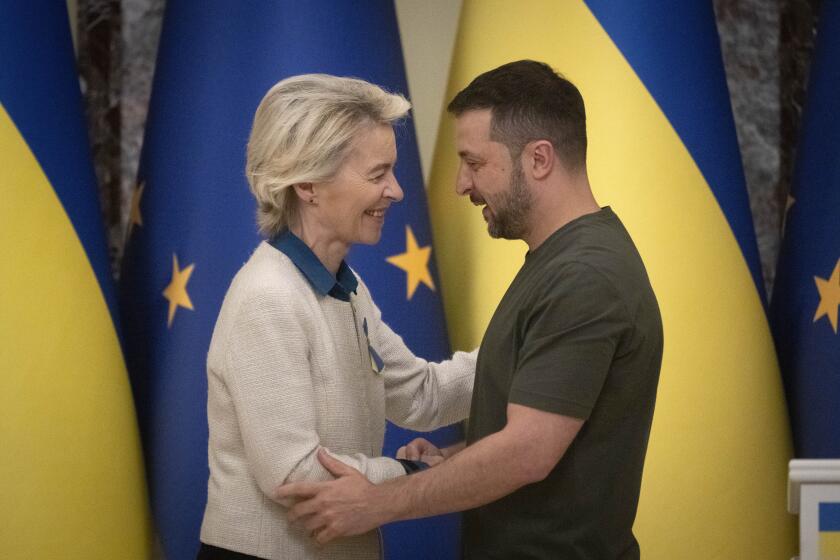A break in decades-old disappearance of 5 New Jersey teens
The bodies were never found. The presumed crime scene burned to the ground nearly 32 years ago. One of the three suspects is dead.
But police in Newark, N.J., said Tuesday that more than three decades after five teenage boys vanished on a sweltering summer night, they have charged two men with luring them into a home, locking them inside, and setting it on fire.
The alleged motive: To punish the teens for apparently swiping marijuana from one of the suspects.
“The mystery has now been solved,” said Robert Laurino, acting prosecutor of Essex County, as he displayed two large, color photographs of the arrested men -- Lee Anthony Evans, 56, and Philander Hampton, 53.Laurino said the two were “very very quiet” when police knocked on their doors Monday, cuffed them and led them into the rainy night to be jailed. Each was held on $5-million bail.
“More than likely, they did believe this was behind them,” Laurino said of the men.
The crime has long cast a cloud over a city that struggles with violent crime.
The disappearances mystified the city, frustrated the police and brought despair to relatives with each false lead.
No crime has hung “as hard and as heavy” on Newark, said Mayor Cory Booker.
The dead teens -- who had been friends for years -- were known as the Clinton Avenue Five, for the last place they were seen alive. Laurino said they “essentially disappeared off the face of the earth” Aug. 20, 1978.
Randy Johnson, 16; Melvin Pittman, 17, Ernest Taylor, 17; and Alvin Turner, 16, all lived in Newark. Michael McDowell, 16, came from nearby East Orange. The five would often gather to shoot hoops and sometimes took odd jobs with Evans, a local contractor.
Police said Evans had long been suspected of involvement in the case, because the boys were last seen getting into his pickup truck.
But there was no evidence, no corpses, and no witnesses to a crime -- until 18 months ago, when someone came forward. The witness, whom police did not identify, cracked the case.
As the years went by, some family members submitted DNA samples in hopes they would match one of the tens of thousands of unidentified corpses that land in morgues each year. Psychics were called in. Fields were excavated. The brick home now standing on Camden Street, where the boys allegedly met their fiery deaths, was scoured.
“They were looking for bodies. But they found none,” said Mattie Williams, who lives there now.
Some lost hope.
“I don’t think that anyone will . . . get arrested or go to trial, because people who know this information are probably dead now,” Michael McDowell’s sister, Terry Lawson, told the Star-Ledger of Newark two years ago, on the 30th anniversary of her brother’s disappearance.
On Tuesday, relatives appeared relieved that someone would face trial for the boys’ deaths, but shaken by the brutality of the case. “If this is justice, justice is always empty in a situation like this,” said Helen Simmons, Michael McDowell’s aunt.
His uncle, William McDowell, who was at the Essex County courthouse Tuesday, said family members always suspected Evans, even though he had insisted to police that he dropped the teens off that night after they had done some work for him.
“Once there is a trial and there is a conviction, I’m sure there’ll be closure, for me at least, anyway,” he said.
Both men were charged with murder and arson, and police described the witness as highly credible. But they also conceded that they have yet to find any bodies -- something that cold-case expert Joseph Pollini said makes the case highly unusual.
Pollini, a professor at New York’s John Jay College of Criminal Justice, who was lieutenant commander of the New York Police Department’s cold-case unit from 1996 to 2002, said he had never had a case in which a body was missing, much less five.
“It’s a rare type of situation,” said Pollini, adding that he could not think of a cold case involving this many victims, killed at one time, that had been solved after so long.
More to Read
Sign up for Essential California
The most important California stories and recommendations in your inbox every morning.
You may occasionally receive promotional content from the Los Angeles Times.











